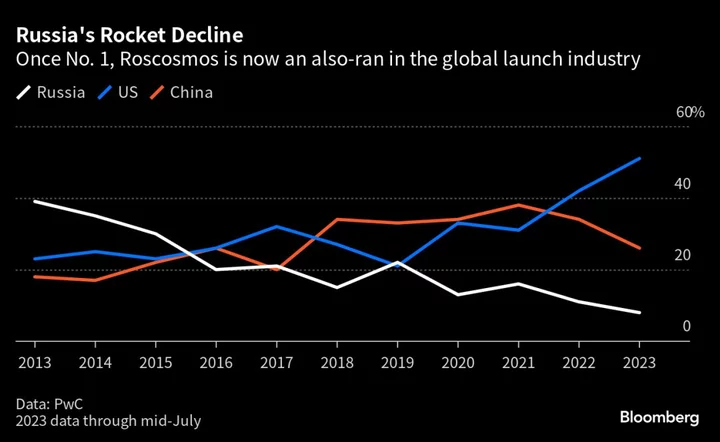Russia is set to return to the moon after nearly 50 years by sending an uncrewed lander toward the lunar south pole, joining a race with NASA and other space agencies.
With a launch scheduled out of the Vostochny Cosmodrome in Russia’s far east around 2 a.m. Moscow time, or 7 p.m. in New York on Thursday, Luna-25 will be competing with India’s Chandrayaan-3, which is orbiting the moon and is also likely to attempt to touch down near the pole in late August. Whichever country lands first could receive the title for being the first to land a spacecraft intact on or near this region.
The lunar south pole is a highly coveted target among space-faring nations, including the US and China. Sensors from various lunar spacecraft have found evidence of water ice in craters in this region. Engineers and scientists have proposed the possibility of prospecting and maybe even mining this water ice in the future, for use in future lunar exploration and maybe even as a source of rocket fuel.
Getting Luna-25 safely to the moon would provide a much-needed boost for Russian space agency Roscosmos, which has struggled in recent years from low funding, controversial leadership and poor execution, without seeing much advancement beyond sending people and satellites to low-Earth orbit.
The USSR was the first country to land a spacecraft on the moon, but Russia all but abandoned lunar exploration after the last Soviet moon mission, a robotic probe in 1976.
Luna-25’s success is far from guaranteed, especially as numerous moon exploration missions have struggled to land intact on the lunar surface in recent years. In April, a lander operated by the Japanese company ispace crashed into the moon during a landing attempt, coming in too fast for touchdown. In 2019, India’s Vikram lunar lander, part of a mission called Chandrayaan-2, and an experimental lander from Israeli nonprofit SpaceIL also shared similar fates.
Once on the moon, Luna-25 will study the lunar soil and exosphere, part of the moon’s very thin atmosphere. The spacecraft is also equipped with a small robotic arm to collect soil samples for analysis. The lander’s mission is designed to last as long as a year.
Roscosmos has experienced further damage as a result of President Vladimir Putin’s full-scale invasion of Ukraine last year. The country’s space partnerships nearly evaporated and satellite operators like OneWeb Ltd. canceled launches.
The European Space Agency abandoned plans to provide a navigation camera that would ride on Luna-25 and called off a joint project for a Mars explorer, although Russia continues to work with its US, European, Japanese and Canadian partners on the International Space Station.
While Elon Musk’s SpaceX and others are building extensive networks of satellites in low-Earth orbit, Russia’s share of the launch market has shrunk, accounting for only about 8% of launches this year, according to data from accountancy PwC, down from nearly 40% a decade ago.
The war “accelerated a decline that was already in place,” said Dallas Kasaboski, principal analyst with space consultancy Northern Sky Research. The Russians “just haven’t really been as strong of a leader in space as they historically have been.”
NASA, which hopes to return astronauts to the moon through its Artemis program, last year announced 13 potential landing regions near the pole.
The Chinese space agency’s robotic Chang’e 7, scheduled around 2026, will carry equipment to investigate ice reserves in the permanently shadowed part of a crater in the region, state media reported on Aug. 1.
Later, China will deploy spacecraft to build a research station near the south pole, and the government intends on sending the first Chinese astronauts to the moon by 2030, a China Manned Space Agency official said in May.
China Warning
While NASA Administrator Bill Nelson has repeatedly criticized China, warning that Beijing may seek to get to the lunar south pole first and prevent other countries from accessing resources there, he hasn’t sounded similar alarms about Russia. During the Soviet era, no cosmonauts from Russia ever got to the moon.
The Russian space program isn’t about to send anyone there, Nelson said in a media briefing on Aug. 8.
“I don’t think a lot of people at this point would say that Russia is actually ready to be landing cosmonauts on the moon in the time frame that we’re talking about, or that possibly China would be,” Nelson said. “So I think the space race is really between us and China.”
Roscosmos didn’t respond to requests for comment.
After such a long absence from the moon, Roscosmos intends to send more missions after Luna-25. Plans include a lander to search for minerals and water ice.
(Updates with details on lunar south pole third paragraph 3, space exploration challenges sixth paragraph)









